Verstappen bites tongue as swearing row rages on - Saudi Arabian GP takeaways
The 2025 Saudi Arabian GP delivered a pivotal shake-up in the title battle, as Piastri claimed victory in Jeddah to take the lead the lead in the standings. Here are the main topics from the fifth round of the season
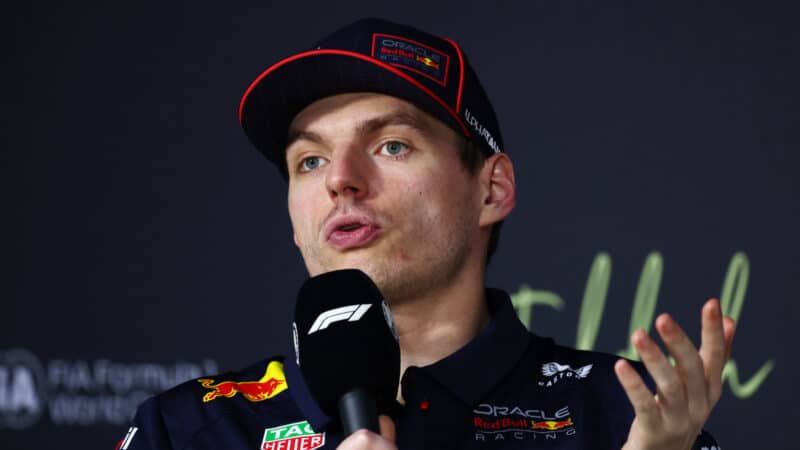
Verstappen didn't offer a lot during the post-race press conference
Getty Images
The first triple-header of 2025 was wrapped up in Saudi Arabia, a race won by Oscar Piastri, but not without some controversy, both during and after it. Here’s the main takeaways from the Jeddah weekend.
Verstappen’s beef with the FIA has no end in sight
It has been seven months since Max Verstappen was punished by the FIA for using “coarse” language to describe his car’s performance during last year’s Singapore Grand Prix, and the world champion continued to bite his tongue at Jeddah.
First, when asked about his penalty in the on-track interviews by David Coulthard, Verstappen simply decided to thank the crowd and walk away after just one question. In the post-race conference, the Red Bull driver provided a few more answers, but none that satisfied the journalists asking them.
“Honestly, it’s better if I don’t say too much. It also saves me time because we already have to do so much. It’s honestly just how everything is becoming. Everyone is super sensitive about everything. And what we have currently, we cannot be critical anyway. So less talking, even better for me.”

Verstappen spoke to FIA president Ben Sulayem after the race
Getty Images
Verstappen didn’t specifically name the FIA’s clampdown on swearing and he even blamed social media for the way it twists what he says, but his comments clearly implied he wanted to avoid any sort of trouble with the ruling body.
“I know that I cannot swear in here, but at the same time, you can also not be critical or any kind of form that might harm or danger or, let me get the sheet out, there’s a lot of lines, you know? So that’s why it’s better not to talk about it, because you can put yourself in trouble. And I don’t think anyone wants that.”
With the FIA having stiffened the punishments for drivers who break the conduct rules, Verstappen’s silence looks set to continue in the future.
The fastest driver didn’t win
Lando Norris‘s assertion that Verstappen had the quickest car at Jeddah was quite an optimistic (or pessimistic?) take, and something that even Oscar Piastri disagreed with. There was no doubt that Verstappen once again flattered his car with his incredible speed and, ahead of the start of the race, made it look like there would be a repeat of his Suzuka display.
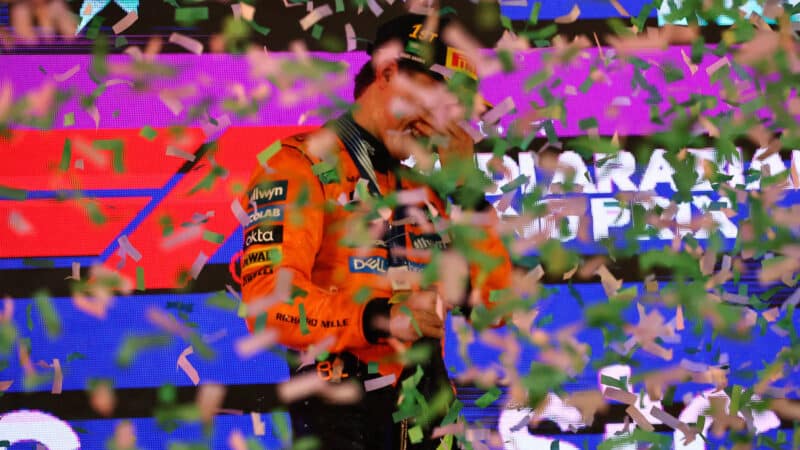
Piastri won but didn’t look like the fastest driver at Jeddah
Grand Prix Photo
But then Verstappen made a worse start than Piastri and his day was derailed. Regardless of whose version was right about the Turn 1 incident, his decision to cut through the corner to keep the lead cost him a clear shot at victory.
Would he have been able to overtake Piastri had he stayed on track and given up the lead instead of going off? It’s impossible to know, although life behind the McLaren would have been tricky for Verstappen, whose Red Bull would have degraded his tyres more by running in the dirty air from Piastri’s car. In the end, there’s no doubt that Verstappen paid the price for his slow start and decision to keep the lead after going off track.
Norris, who had looked like the man to beat judging by his race pace simulation on Friday, threw it all away on Saturday when he crashed on his opening lap in Q3, clearing the way for Piastri and Verstappen to fight it out between themselves.
Norris’s mistake was the kind of error that he usually chastises himself for, and so he did. His fightback on Sunday was strong, even if he missed out on a podium finish, and he will want to build on that and forget the rest as he tries to return to winning ways and re-establish himself as McLaren’s leader before it’s too late.
McLaren could regret wasting time in its fight against Verstappen
As impressive as Piastri has been in the first five races of the season, it feels like having only a 12-point advantage over Verstappen doesn’t truly reflect the advantage McLaren has enjoyed with its car so far.
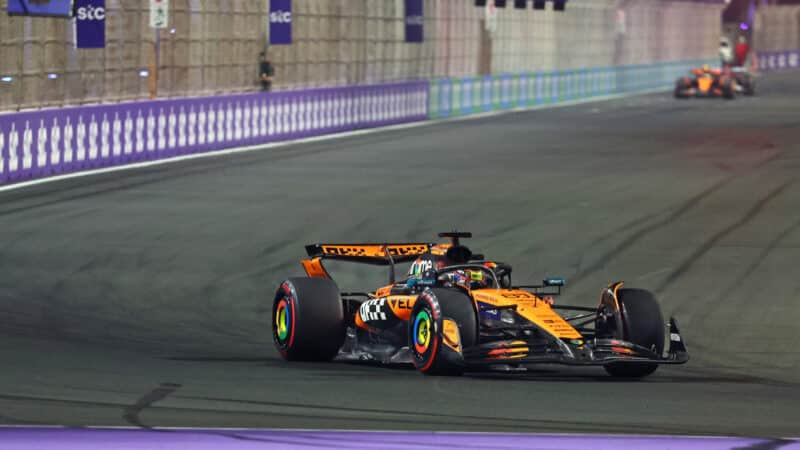
Piastri now leads the championship after Jeddah
Grand Prix Photo
As Piastri himself admitted, his team didn’t expect Verstappen to be so quick around the streets of Jeddah, and it appears pretty obvious that it’s the Dutch driver, and not his car, that’s making the difference. Verstappen is at his peak and, leaving the Turn 1 incident aside, has pretty much extracted the best from its car in the first five rounds of the year. The same cannot be said about McLaren’s duo.
It’s only been five races, and many things can and will change once the development race goes into high gear, but Piastri and Norris not having maximised every chance so far means Verstappen is within striking distance in a car that’s sometimes been the fourth fastest on the grid.
If the Red Bull driver keeps performing this way – and there’s really no season to believe he won’t – McLaren might start regretting not having seized every opportunity to build a bigger gap over Verstappen. Granted, it will depend a lot on developments and how the Spanish GP clampdown on flexi-wings affects the teams, but McLaren would benefit enormously from having both its drivers ahead of the Red Bull while it still has the fastest car.
Leclerc made the difference for Ferrari
As Ferrari continued to figure out exactly where it stands in the pecking order, Charles Leclerc was in a league apart within the Scuderia as he helped beat Mercedes at Jeddah.
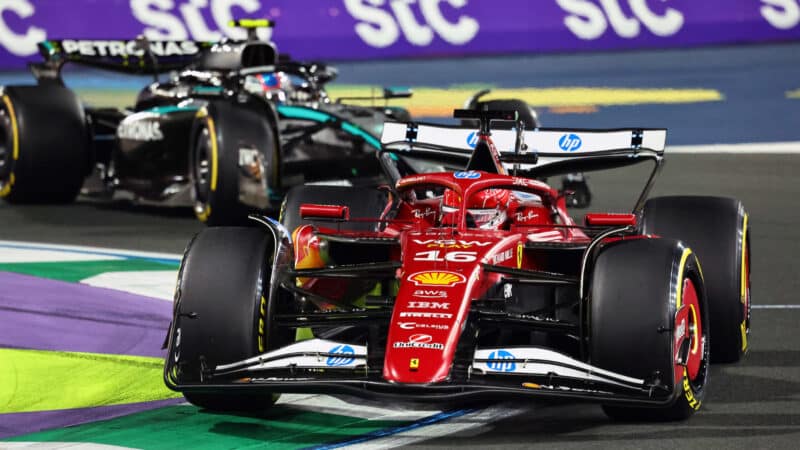
Leclerc gave Ferrari its first podium of the season
Grand Prix Photo
In his own words, Leclerc and Ferrari executed a “perfect” race, and the Monegasque said he had never felt so at ease with a race as he’s feeling right now. The first podium of the season for Ferrari was testament to that. In the process, he managed to beat both Mercedes drivers and also keep Norris at bay as the McLaren driver charged towards the front.
The problem for Leclerc is that Ferrari is still missing performance compared to McLaren, Red Bull and, he says, even to Mercedes, and is pinning hopes on the new front wing that will be introduced in Barcelona to close the gap.
As Leclerc got the absolute best of his package, team-mate Lewis Hamilton had another miserable day and his mood reflected it. “This is how it’s going to be for the rest of the year. It’s just going to be painful,” said the Briton after crossing the finish line in seventh place over 30 seconds behind Leclerc.
Pirelli’s softer tyres made no difference
In its own words ahead of the start of the weekend, Pirelli introduced a softer compound range of tyres for the Saudi Arabian GP “to create more strategy choices for the race and therefore more exciting and unpredictable racing”.
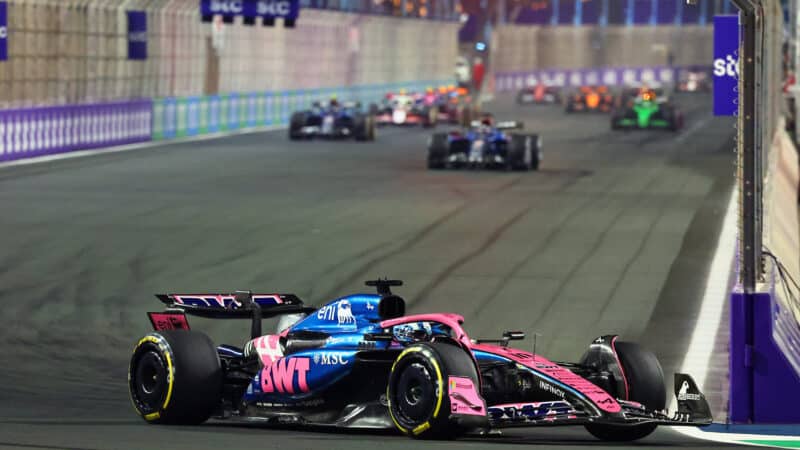
All drivers opted for one-stop strategies at Jeddah
Grand Prix Photo
The Italian manufacturer brought the C5, C4 and C3 compounds to Jeddah, that is, one step softer than what it took to the previous two races of the triple-header.
As it turned out, the decision made no difference in the race, and all drivers opted for a one-stop strategy, most starting with the mediums and finishing with the hards, the only exceptions being Norris, Nico Hülkenberg and Lance Stroll, who took the opposite route.
The race was not exactly action-less, although a lot of overtaking was thanks to the DRS, but Pirelli’s plan to spice it up through tyre strategy evidently failed.
